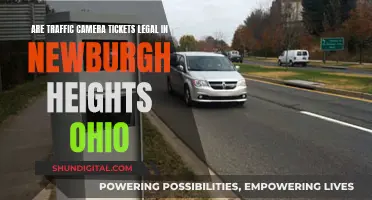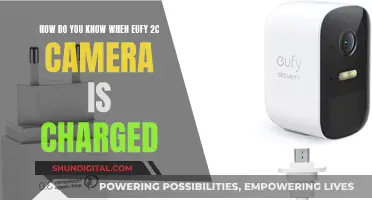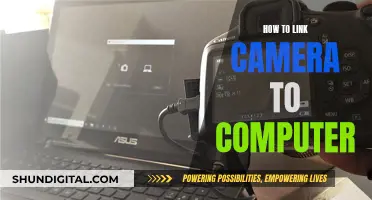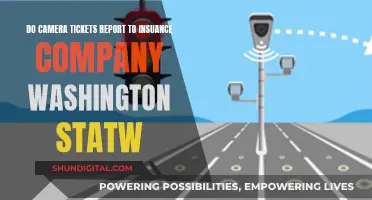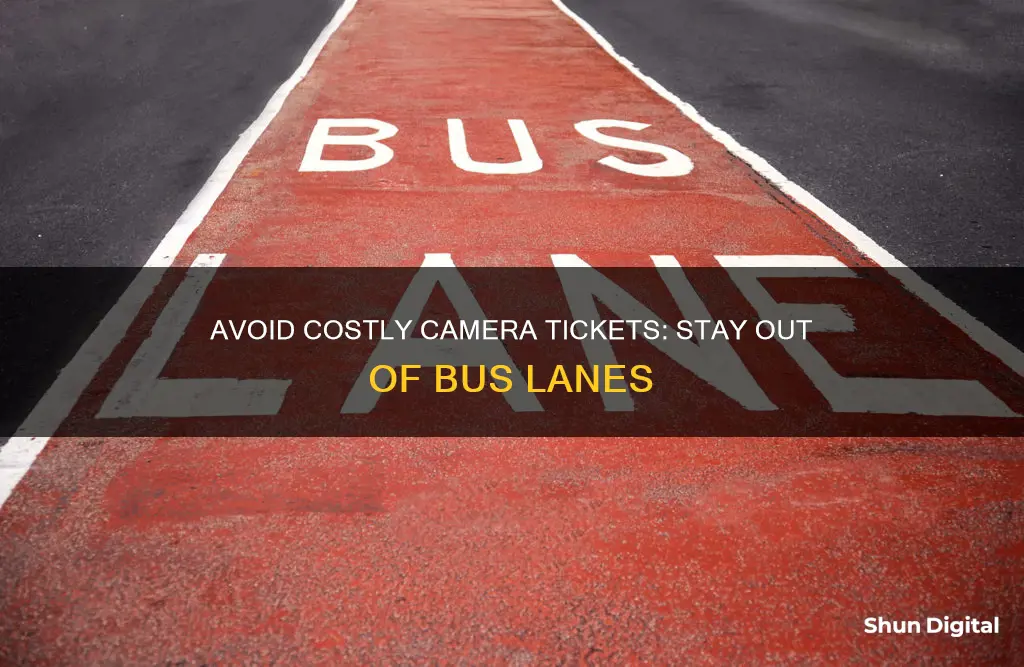
Bus lane camera tickets are an increasingly common issue for drivers in cities around the world. In recent years, there has been a massive rise in fines being issued to drivers who stray into bus lanes, with some sources claiming that this is due to underhand tactics such as poorly located signs and confusing road layouts. While the penalties for these violations vary depending on location, they can often result in significant fines, points on your license, and higher auto insurance costs. However, it is important to note that you have the right to dispute a bus lane violation and seek legal assistance to reduce or avoid penalties.
| Characteristics | Values |
|---|---|
| Location | New York, London, Glasgow, Leeds, Manchester, Cardiff, Bristol |
| Average fine | $50 for the first offense, $100 for the second offense, $150 for the third offense, $200 for the fourth offense, and $250 for each additional offense |
| Possible defenses | Evidence showing that some condition on the roadway prevented you from making an immediate right turn, complying with the direction of law enforcement personnel, a sudden mechanical breakdown or unexpected medical emergency, or temporarily stopping to expeditiously pick up or drop off passengers at the curbside |
| Appeal process | Take up the matter with the issuing authority within the specified time limit (typically 28 days). If your appeal is unsuccessful, turn to the Traffic Penalty Tribunal. |
What You'll Learn

Understand the rules for entering a bus lane
To avoid receiving a ticket for violating bus lane rules, it is important to understand the regulations surrounding them. Bus lanes are reserved for public transport vehicles to load and unload passengers, and motorists are forbidden from driving, parking, or standing in them during designated hours.
In New York City, there are specific rules that motorists must follow when it comes to bus lanes:
- Turning at an Intersection or Accessing a Driveway: Unless prohibited, vehicles are generally allowed to enter a bus lane to make a turn at an intersection or to access a driveway within 200 feet of entering the bus lane.
- Stopping to Pick Up or Drop Off Passengers: Motorists are permitted to stop in the bus lane only for the time it takes for a passenger to get into or out of the vehicle at the curbside.
- No Pick-up or Delivery of Goods: Vehicles are not allowed to pick up or deliver goods in a bus lane during the designated hours.
- Accessing Street Parking: Vehicles are allowed to enter a bus lane to access legal street parking that is adjacent to the bus lane.
Outside of these specific circumstances, non-bus vehicles are prohibited from entering bus lanes during the designated hours. There are road signs indicating the days of the week and the hours during which the bus lane is in effect, and drivers who break these rules can be ticketed and fined.
It is important to note that there are different methods of enforcement for bus lane rules, including street-mounted cameras and bus-mounted cameras, which capture violations and result in fines for motorists.
Understanding and following the rules for entering a bus lane is crucial to avoiding tickets and fines, as well as ensuring the smooth operation of public buses and the safety of passengers.
Charging Cameras: A Solo Participant's Guide
You may want to see also

Know the penalties for bus lane violations
Bus lane violations can result in either a parking violation or a moving violation. Both types of violations carry fines, but moving violations can also lead to points on your license, higher auto insurance costs, and other long-term consequences.
Fines
In New York City, a bus lane ticket can result in a fine ranging from $115 to $150. As of August 19, 2024, if a vehicle has more than one bus lane restriction violation within a 12-month period, the fines are as follows:
- $50 for the first offense
- $100 for the second offense
- $150 for the third offense
- $200 for the fourth offense
- $250 for each additional offense
In London, the typical penalty for driving in a bus lane is £130, while outside the capital, it is £70. Drivers who pay promptly can usually have their fine reduced by half.
License points and other consequences
License points from moving violations can lead to the eventual suspension of a driver's license if a motorist accumulates too many points within a designated period. Additionally, a record of a bus lane ticket can make a driver appear to be a higher risk to insurance companies, potentially resulting in increased auto insurance premiums for years after the violation.
The Evolution of Fujifilm Cameras: A Manufacturing Journey
You may want to see also

Learn how to fight a bus lane ticket
Bus lane cameras are becoming an increasingly common way to enforce traffic rules and keep buses running on time. However, if you've received a bus lane ticket, there are a few things you can do to fight it. Here are some steps you can take to learn how to dispute a bus lane violation and potentially get the ticket dismissed:
Understand the bus lane laws in your area
Before taking any action, it's important to understand the specific bus lane laws that apply in your city or region. In some places, there may be certain circumstances under which you are allowed to enter a bus lane, such as making a turn at an intersection or picking up or dropping off passengers. Knowing the exact rules will help you determine if your actions were in violation of the law.
Review the evidence against you
Bus lane tickets are often issued based on photographic or video evidence captured by enforcement cameras. You have the right to request and review this evidence before deciding how to proceed. Carefully examine the photos or videos to see if they clearly show your vehicle violating the bus lane rules. Look for any mitigating factors that might help your case, such as confusing road layouts or signage.
Identify possible defences
Depending on the specific circumstances of your case, there may be several possible defences you can use to dispute the bus lane ticket. For example, you may be able to argue that:
- You were complying with the directions of law enforcement personnel.
- There was a sudden mechanical breakdown or unexpected medical emergency that necessitated stopping in the bus lane.
- You were temporarily stopping to pick up or drop off passengers at the curbside.
- Road conditions left you with no other option but to enter and stay in the bus lane.
Gather supporting evidence
If you believe you have a valid defence, gather any evidence that can support your claim. This could include photos or videos of the location, witness statements, maintenance records, or medical reports. Any evidence that can help prove your actions were justified or that you had no other choice but to enter the bus lane can strengthen your case.
Contact a traffic ticket lawyer
Consider consulting a local traffic ticket lawyer who has experience with bus lane violations. They can review the details of your case, explain your legal options, and help you build the strongest possible defence. A lawyer can also represent you during any hearings or negotiations with the authorities.
Remember, it's important to act promptly when fighting a bus lane ticket, as there are usually time limits for submitting appeals or responding to the allegations. By understanding your rights, reviewing the evidence, and seeking legal assistance, you can improve your chances of successfully disputing a bus lane violation.
Finding Adobe Camera Raw Files: Location and Access
You may want to see also

Identify the locations of bus lane cameras
To identify the locations of bus lane cameras, you can start by checking the official websites of your local transportation authorities or departments of transportation. These websites often provide information about bus lane enforcement and the locations where cameras are installed. For example, in New York City, the Metropolitan Transportation Authority (MTA) and the New York City Department of Transportation (NYCDOT) provide updates on their websites regarding the deployment of bus lane cameras.
Additionally, you can look for signs and indicators on the roads themselves. Bus lanes that are monitored by cameras usually have signage indicating "camera enforcement" or "bus lane enforcement." These signs may also specify the hours of enforcement and the applicable days of the week.
Another way to identify bus lane camera locations is by using online maps and traffic apps. Some mapping services incorporate bus lane information, including the presence of enforcement cameras. By utilizing these tools, you can get a sense of where the cameras are positioned along your route.
It's also worth staying informed about any changes or expansions to bus lane camera programs. Local news outlets and transportation blogs often report on these updates, so following them can help you stay aware of new camera installations. Additionally, you can sign up for alerts or newsletters from transportation authorities, as they may send notifications when new bus lane cameras are introduced.
Lastly, you can connect with other drivers in your area through online forums or community groups. Sharing experiences and information can help you collectively identify the locations where bus lane cameras are active.
Where to Find Adobe Camera Raw
You may want to see also

Find out how to appeal a bus lane ticket
If you've received a bus lane ticket, you may be able to appeal it. Here's what you need to do:
First, it's important to understand the rules for bus lanes in your area. In New York City, for example, motorists are generally allowed to enter a bus lane to make a turn at an intersection or to access a driveway within 200 feet. Motorists are also permitted to stop in the bus lane to pick up or drop off passengers, but only for a brief period. Unless otherwise prohibited, vehicles are also allowed to enter a bus lane to access street parking that is adjacent to the bus lane.
If you believe you were wrongly issued a bus lane ticket, you can take up the matter with the authority that issued the ticket. In most cases, you must do this within a specified time limit, often around 28 days. When appealing, you may be able to provide evidence that shows you had no other option but to enter and stay in the bus lane, such as unclear signage or roadworks.
If your initial appeal is unsuccessful, you can escalate the matter to a higher authority, such as an independent traffic penalty tribunal. This body has the power to cancel the penalty charge notice (PCN).
It's important to note that ignoring a bus lane ticket can lead to serious consequences, including fines, points on your license, and even a suspended license. Therefore, it's crucial to take action and explore your appeal options promptly.
For specific guidance on appealing a bus lane ticket in your region, consult your local government's website or seek advice from a legal professional.
Cleaning a Leaky Camera Battery: Step-by-Step Guide
You may want to see also
Frequently asked questions
Bus lanes in New York City are designated for public transport vehicles to load and unload passengers. Motorists are allowed to enter a bus lane to make a turn at an intersection or to access a driveway within 200 feet. They can also stop in the bus lane to pick up or drop off a passenger at the curbside.
Violating bus lane rules in New York City can result in a parking or moving violation. A bus lane ticket can lead to a fine ranging from $50 to $250, depending on the number of offenses. Moving violations can also add points to your license, increase insurance costs, and affect job opportunities.
You have the right to dispute a bus lane violation ticket. Possible defenses include showing evidence that road conditions prevented you from making a turn, complying with law enforcement instructions, experiencing a mechanical breakdown or medical emergency, or temporarily stopping to pick up or drop off passengers.
To avoid bus lane camera tickets, pay attention to road signs and lane markings, especially when turning left. Be mindful of the permitted reasons for entering a bus lane, such as accessing a driveway or picking up passengers. Familiarize yourself with the applicable hours and days for bus lane restrictions.


